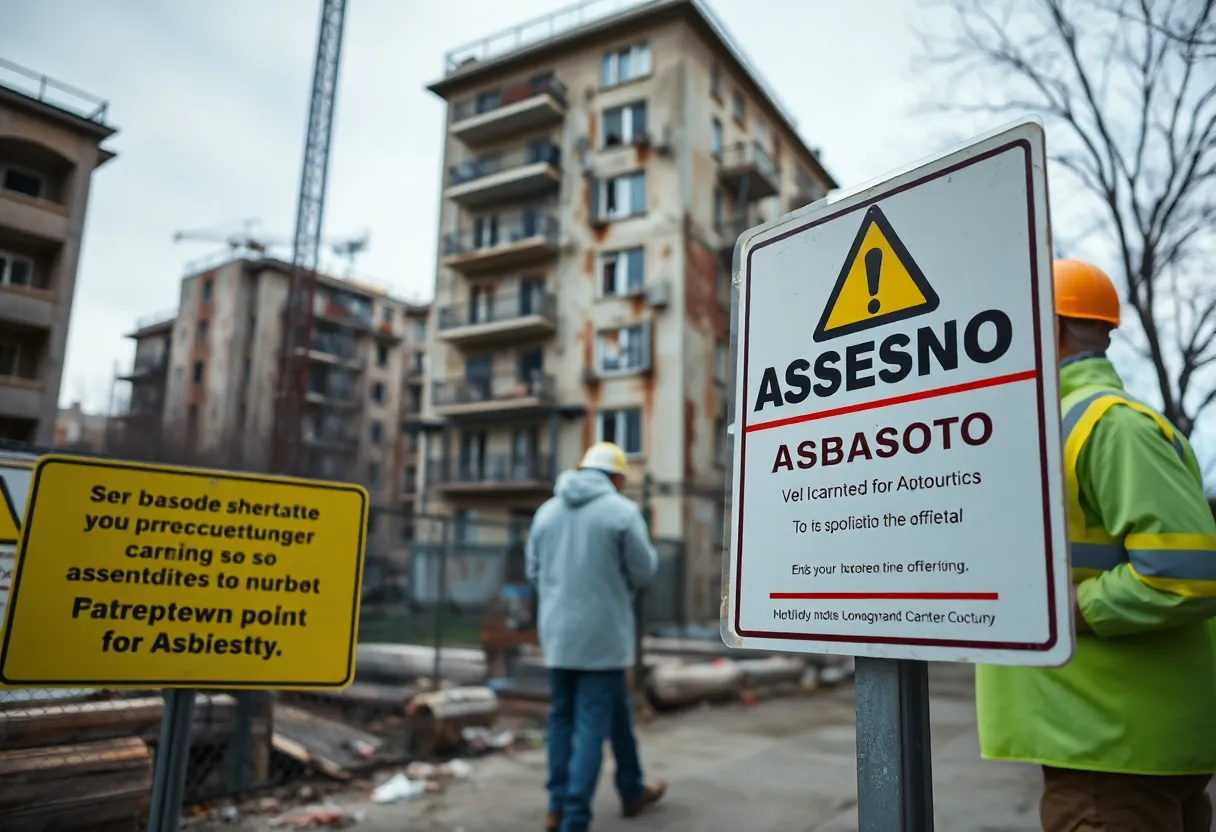News Summary
The U.S. plans to phase out chrysotile asbestos over 12 years, aligning with global movements to curb its usage, but concerns remain regarding other unregulated types.
Asbestos: The Toxic Carcinogen Strikes Again as U.S. Implements Phased Ban
Despite the overwhelming evidence of its dangers, asbestos continues to spell trouble in the American landscape. Once hailed as a ‘magic mineral’ for its remarkable durability and heat resistance, this notorious carcinogen is implicated in roughly 40,000 deaths annually from lung cancer, mesothelioma, and other related cancers in the United States alone.
Phased Action: The U.S. Joins the Global Movement
As the U.S. government finally gains traction in the fight against asbestos, a phased ban on certain types is underway. This progressive action aligns the U.S. with over 60 other countries that have long implemented strict bans against this hazardous material. The focus of the U.S. ban is solely on chrysotile asbestos (white asbestos), which has been the only variant still imported for use in various industries, including the production of vehicle brakes and during industrial chlorine manufacturing.
Time is Ticking: 12 Years to Phase Out White Asbestos
Under the new regulations, industries utilizing white asbestos are afforded a generous 12-year window to phase it out completely. This flexibly extended timeline raises eyebrows among health advocates, as chrysotile remains a core component in the chlor-alkali process, which produces chlorine essential for drinking water purification. Critics argue that such a lengthy transition period may delay crucial health protections that vulnerable communities desperately need.
The Legacy Problem: What About Other Asbestos Types?
While the EPA’s ban on chrysotile asbestos is a step toward safeguarding public health, it has drawn scrutiny for failing to address other types of asbestos that remain unregulated. Experts express concern that companies may pivot to using these alternatives, thus continuing the cycle of danger. Legacy asbestos – the material that has permeated older buildings and industrial structures – poses another significant health risk and may continue to affect countless individuals across the nation.
Bans Around the World: How Does the U.S. Compare?
Globally, asbestos bans are becoming more common, with over 50 countries, including the UK, which enacted its ban 25 years ago, taking decisive action against its use. Although the U.S. is now making efforts to curb asbestos exposure, many argue that their ban is far more limited compared to international counterparts. The history of regulatory delays, particularly under the previous administration, has further complicated the U.S. approach to asbestos regulation.
Chlor-Alkali Industry Granted More Time
Specific industries, like the chlor-alkali sector, have been granted additional leeway. Originally aimed at accelerating the transition from using asbestos diaphragms, the given grace period has been further extended due to apprehensions surrounding chlorine supply disruptions. The American Chemistry Council called for a staggering 15-year period to adapt, emphasizing the need to prevent operational upheaval.
Future Implications: The Path Ahead
Despite the EPA’s acknowledgment of the serious risks posed by asbestos, the newfound ban leaves many critics concerned about its implementation and effectiveness. By focusing only on chrysotile and allowing a lengthy phase-out period, there are valid fears that public health may still be at risk. Meanwhile, proponents of chrysotile challenge the banning efforts, arguing that the mineral can be utilized safely under regulated conditions.
Conclusion: A Long Battle Ahead
The phased ban on asbestos marks a critical milestone in improving workplace and public safety, yet the journey ahead is fraught with challenges. As the nation grapples with the legacy of asbestos use, the focus will remain on ensuring that the recent measures genuinely protect citizens from this lethal carcinogen. What lies ahead will depend on future regulations that might finally eliminate all forms of asbestos from the American landscape.
Deeper Dive: News & Info About This Topic
HERE Resources
U-Haul Faces Hefty Fine Over Asbestos Exposure During Renovation
Rising Concern Over Mesothelioma Cases Linked to Asbestos Exposure
Inquest Begins into Asbestos-Related Death of 90-Year-Old
Acorn Analytical Services Expands Workforce Amid Growing Demand for Asbestos Management
Johnson & Johnson’s Bankruptcy Hearing Unfolds Amidst Cancer Lawsuits
Asbestos Concerns Rise: Austin City Officials Take Action
Pennsylvania Supreme Court Empowers Mesothelioma Victims
Controversy Erupts as Cambridge Courthouse Project Faces Environmental Scrutiny
U-Haul’s Asbestos Catastrophe: Workers Exposed in Spokane Renovation Fiasco
Concerns Raised Over Asbestos in Cheltenham’s Queens Hotel



















